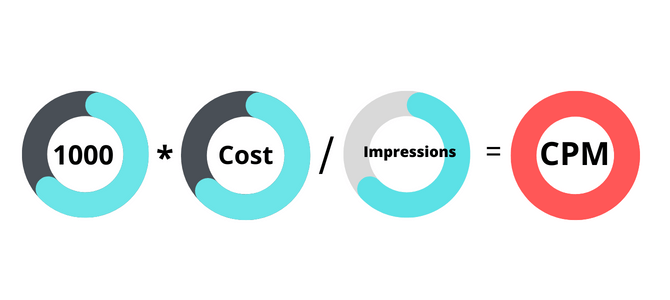
Ensure that your video ads reach the right audience at the right time with contextual advertising. Learn more about it from Aniview.
Table of Contents
on Feb 28, 2023

People mentioned “CPM” everywhere in digital advertising, but what does it mean? “CPM” stands for “cost per mile,” and it’s industry shorthand for the amount an advertiser pays for every 1000 impressions that an ad receives. Cost per Mile remains one of the most common pricing models in the online advertising industry.
For video ads in particular, the Interactive Advertising Bureau (IAB) released standardized impression measurement guidelines in 2009. However, the CPM model runs into certain limitations when used for video: it falls short when measuring audience engagement, for example. Industry leaders like Google have thus endorsed alternative pricing models like cost per view (CPV).
The IAB defines an ad impression as a way of measuring an ad delivery system’s responses to ad requests from a user’s browser. Ad delivery responses, per IAB guidelines, must be “recorded at a point as late as possible in the process of delivery … therefore closest to the actual opportunity to see by the user.” Simply put, impressions try to approximate how many users see an ad.
There are different methods that can be used to track the delivery of an ad. Generally, these methods involve:
As a pricing model, CPM denotes the going rate for an ad. An advertiser specifies how much they’re willing to pay for every 1,000 times an ad is served. If an advertiser sets a CPM of $3, for example, and the video ad gets 1,000,000 views, then the advertiser will pay $3,000.

With the advent of other pricing models like Cost Per View (CPV) or Cost Per Completed View (CPCV) [link to glossary entry], you might be wondering if CPM still matters. While other models have caught on, CPM remains widely used in the online advertising industry, and understanding this model is crucial for any advertisers who want to navigate the complex world of ad buys.
Lots of newer pricing models, CPV among them, were also developed as direct improvements upon CPM. A solid grasp of what CPM limitations these models try to address, alongside CPM’s merits, will give you a good idea of what performance indicators matter for video and why. Subsequently, you can make more judicious use of your advertising budget.
So what challenges does the CPM model run into when used for video ads?
First, there’s the prickly issue of engagement. Video, as an ad format, demands more time and attention from audiences compared to a simple display or banner. That interest on the audience’s part can’t be gauged just by counting how many times an ad is served. While CPM can tell you how many times an ad gets loaded on a page that a user visits, then, the measurement doesn’t distinguish between a user who elected to watch a video ad and a user who simply pressed “skip” once the video ad started loading. Nor does CPM mark distinctions between different formats: interactive video, which market research has shown to be more effective than standard video, would nonetheless register the same impression count if the two were served side by side.
Second, there’s the challenge of cross-comparison. For video in particular, advertisers may be more inclined to view digital platforms as companion channels for other advertising venues like TV. However, impressions don’t have a direct counterpart in other advertising venues, so tracking a multi-channel ad campaign’s overall performance can prove difficult.
Featured Posts

Ensure that your video ads reach the right audience at the right time with contextual advertising. Learn more about it from Aniview.

real-time bidding (RTB) refers to the practice of buying and selling ad inventory

Table of Contents1 How TikTok Works2 TikTok as a Marketing Platform3 Your TikTok Marketing Strategy3.1 Research Trending Content3.2 Participate in TikTok Challenges3.3 Branded Hashtags3.4 Collaborate with Influencers3.5 Advertisements4 Find More Platforms to Advertise Your Brand On TikTok was launched in the international market in 2017 and acquired over 1 billion

First time going to Dmexco? Feel like exploring the city? Here are our top places to visit!
Adding {{itemName}} to cart
Added {{itemName}} to cart